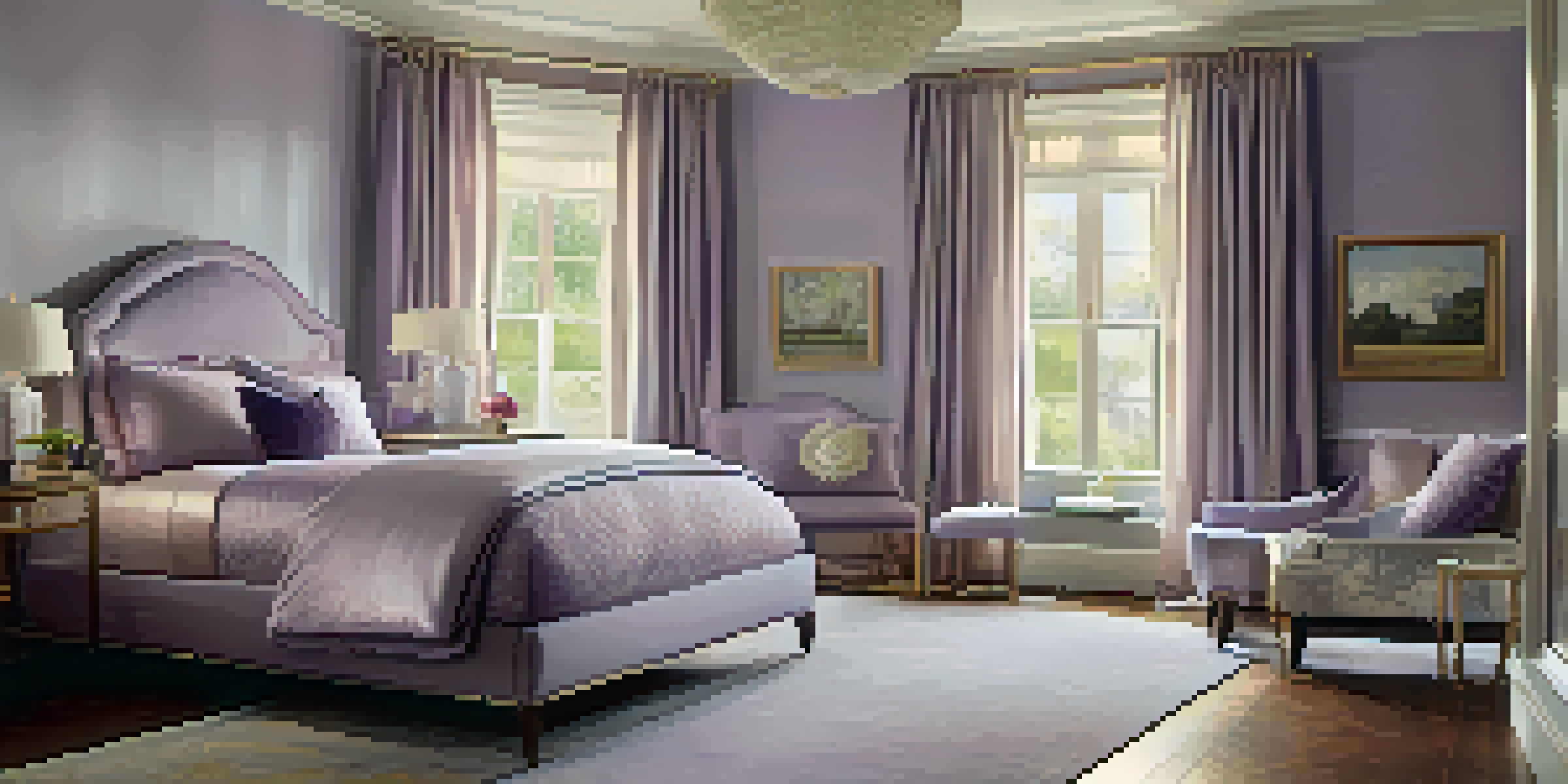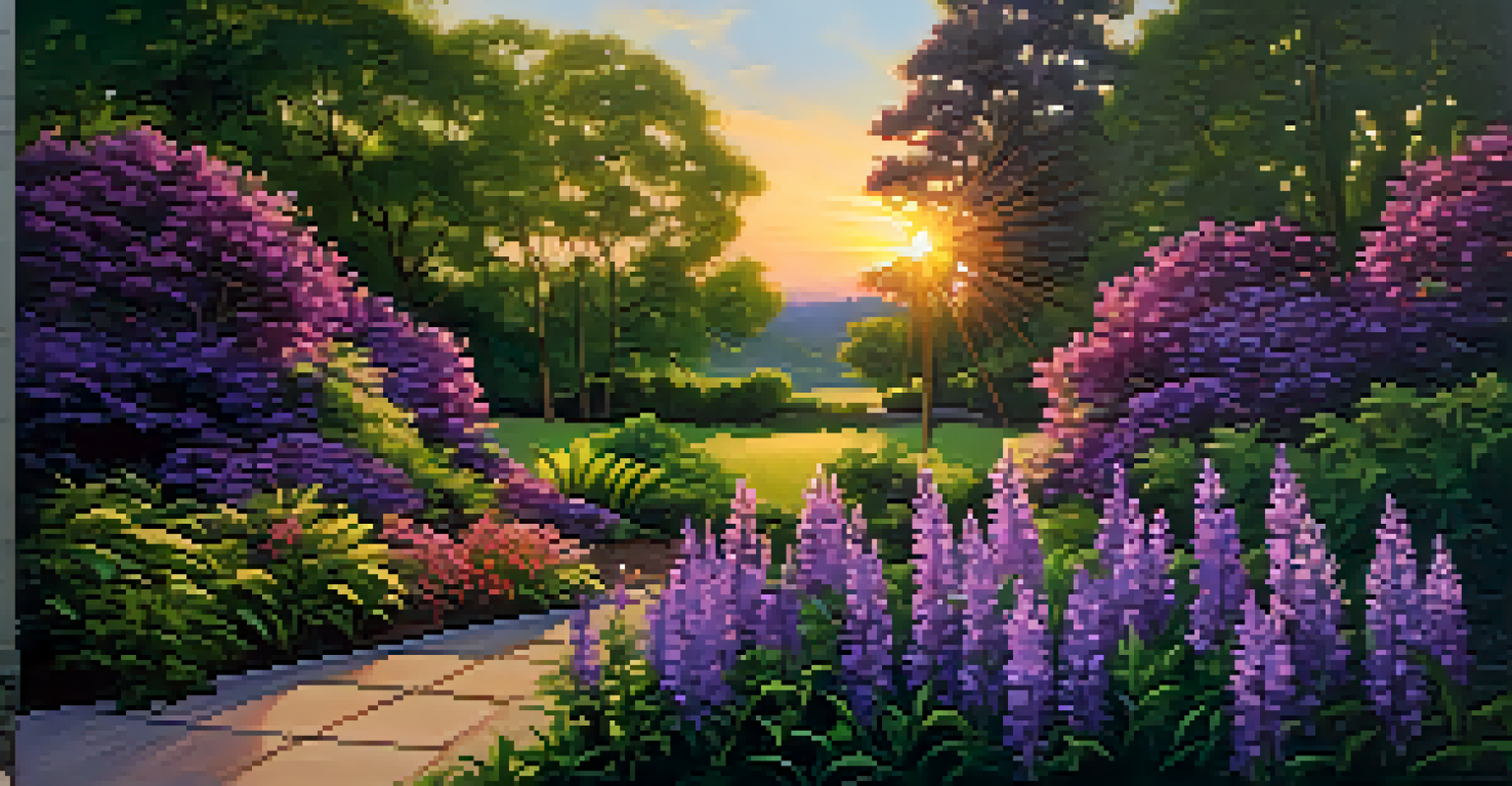The Emotional Weight of Purple in Art and Culture

The Historical Significance of Purple in Art
Throughout history, purple has been a color of royalty and power. In ancient Rome, emperors donned purple to signify their authority, making it a status symbol. This historical context continues to influence how we perceive the color today, associating it with wealth and prestige.
Color is the keyboard, the eyes are the harmonies, the soul is the piano with many strings.
The rarity of purple dye in ancient times also contributed to its value. Extracted from the mucous glands of sea snails, it took thousands of snails to produce just a small amount of pigment. This labor-intensive process made purple garments prohibitively expensive, reinforcing its connection to nobility.
Today, while purple is more accessible thanks to modern dyes, its historical significance still resonates in cultural expressions. Many artists and designers continue to use purple to evoke feelings of richness and depth in their work, highlighting its lasting impact.
The Psychological Effects of Purple on Emotions
Color psychology suggests that purple evokes feelings of creativity, mystery, and spirituality. When we see purple, it often inspires a sense of calmness and introspection, making it a popular choice in therapeutic art. This emotional weight can be powerful, influencing our mood and mental well-being.

Artists often harness this emotional connection to create pieces that resonate on a deeper level with their audience. For instance, a painting dominated by purple hues may evoke nostalgia or contemplation, drawing viewers into its emotional narrative. This ability to convey complex feelings is part of what makes purple such a compelling choice in art.
Purple: A Symbol of Royalty
Historically, purple has been associated with royalty and power, making it a status symbol due to its rarity and cost.
Moreover, different shades of purple can elicit varied responses. Lighter shades may be perceived as whimsical and soothing, while darker shades can evoke sophistication or melancholy. Understanding these nuances allows artists and designers to communicate specific emotions effectively through their work.
Purple in Popular Culture and Media
From music to film, purple has found its place as a symbol of uniqueness and individuality in popular culture. Iconic artists like Prince have embraced purple, associating it with their personal brand and artistic identity. This connection encourages fans to explore their own creativity and self-expression.
Art is the most beautiful of all lies.
In film and literature, purple often symbolizes transformation and growth. Characters adorned in purple might undergo significant changes or face moral dilemmas, reflecting their internal struggles. This nuanced use of color deepens storytelling, making purple a powerful tool in narrative development.
Furthermore, the prevalence of purple in logos and branding speaks to its ability to capture attention and convey emotion. Brands like Taco Bell and Yahoo! have utilized purple to stand out in a crowded market, emphasizing creativity and playfulness. This strategic use of color highlights its importance in shaping public perception.
Cultural Variations of Purple's Meaning
While purple is often linked to luxury in Western cultures, its meanings can vary significantly around the globe. In some cultures, purple represents mourning and is worn at funerals, illustrating the color's complex emotional weight. This divergence in interpretation showcases the richness of cultural contexts.
In Japan, purple is associated with nobility and the samurai, reflecting its historical significance in that region. This cultural connection reinforces the idea that colors can carry different meanings based on societal customs and traditions. Such variations make purple a fascinating subject in the study of art and culture.
Purple's Emotional Impact
The color purple evokes feelings of creativity, calmness, and introspection, influencing mood and emotional well-being.
Understanding these cultural differences is essential for artists and communicators. By being aware of how purple is perceived in various contexts, they can create works that resonate more deeply with diverse audiences. This cultural sensitivity enhances the emotional impact of their creations.
The Use of Purple in Modern Art Movements
Modern art movements have embraced purple as a way to challenge traditional norms and express new ideas. The vibrant color often serves as a vehicle for artists to explore themes of identity, sexuality, and social issues. By incorporating purple, they invite viewers to engage with their work on a more emotional level.
For instance, artists in the LGBTQ+ community frequently use purple to symbolize pride and empowerment. The color has become a representation of inclusivity and acceptance, fostering a sense of belonging among individuals. This use of purple reflects broader social movements, showcasing how art can influence and mirror cultural change.
Moreover, contemporary art installations often utilize purple lighting and materials to create immersive experiences. These multisensory environments invite participants to explore their emotions and thoughts, reinforcing the connection between color and personal experience. In this way, purple continues to evolve within the artistic landscape.
The Role of Purple in Interior Design
In the realm of interior design, purple can transform a space by adding depth and character. Designers often choose varying shades of purple to create atmospheres of relaxation, creativity, or even drama, depending on the intended mood. This versatility makes purple a popular choice in both residential and commercial spaces.
For example, a soft lavender in a bedroom can promote tranquility and restful sleep, while a bold violet in a creative studio can inspire innovation and artistic expression. This interplay between color and environment underscores how purple can significantly influence our daily experiences.
Cultural Variations of Purple
While often linked to luxury in the West, purple carries different meanings globally, such as mourning in some cultures.
Additionally, incorporating purple through accents—like throw pillows or artwork—allows for subtle yet impactful changes in a room's ambiance. This approach caters to those who may hesitate to commit to a full purple palette, while still enjoying the emotional benefits of this powerful color.
Conclusion: Embracing the Emotional Power of Purple
In conclusion, purple's emotional weight in art and culture is profound and multifaceted. From its historical significance to its psychological effects, this color continues to inspire and provoke thought across various mediums. Understanding these layers helps us appreciate the intentionality behind artistic choices.
As we engage with art and culture, recognizing the emotional nuances of purple allows for a deeper connection with the work. This awareness enriches our experiences, encouraging us to explore our feelings and interpretations. Purple, with its rich tapestry of meanings, invites us to reflect on our own journeys.

Ultimately, whether in art, design, or everyday life, embracing the emotional power of purple can enhance our understanding of ourselves and the world around us. So next time you encounter this vibrant hue, take a moment to consider the feelings and stories it may evoke.